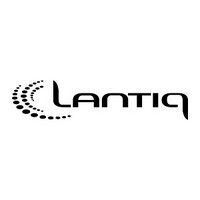PEF2054NV21XK Lantiq, PEF2054NV21XK Datasheet - Page 194

PEF2054NV21XK
Manufacturer Part Number
PEF2054NV21XK
Description
Manufacturer
Lantiq
Datasheet
1.PEF2054NV21XK.pdf
(269 pages)
Specifications of PEF2054NV21XK
Lead Free Status / Rohs Status
Compliant
- Current page: 194 of 269
- Download datasheet (2Mb)
In this case the monitor channel protocol is a non handshake procedure which can be
used to exchange one byte of information at a time between the EPIC and a layer-1
device such as the IBC (PEB 2095) or the IEC-T (PEB 2090).
Data bytes to be transmitted are sent once in the downstream monitor channel. Since
the monitor channel is idle (FF
accepts only valid data bytes which are different from FF
back to the EPIC, this must occur in the frame following the frame of reception.
SLD Interface Protocol
The transfer of control information over the feature control channel of an SLD interface
e.g. for programming the coefficients to a SICOFI (PEB 2060) device is also performed
without a handshake procedure. Data is transmitted and received synchronous to the
8 kHz frame at a speed of one data byte per frame.
The MF handler of the EPIC supports all three kinds of protocols. A bidirectional 16 byte
FIFO, the MFFIFO, serves as data buffer for outgoing and incoming MF messages in all
protocol modes. This implies that the MF communication is always performed on a
half-duplex basis.
Differentiation between IOM-2 and IOM-1/SLD modes is made via the MF Protocol
Selection bit MFPS in the Operation Mode Register OMDR.
IOM
Since the IOM-1 and SLD protocols are very similar, they are treated by the EPIC in
exactly the same way i.e. without handshake protocol. The only processing difference
concerns the involved upstream time slot when receiving data:
When configured as IOM interface (CFI modes 0, 1 or 2), the CFI ports consist of
separate upstream (DU) and downstream (DD) lines. In this case MF data is transmitted
on DD and received on DU of the same CFI time slot.
When configured as SLD interface (CFI mode 3), the CFI ports consist of bidirectional
lines (SIP). The first four time slots of the frame are used as downstream time slots and
the last four as upstream time slots. In this case the MF data is transmitted in the
downstream feature control time slot and received on the same CFI line but four time
slots later in the upstream feature control time slot.
CFI time slots which should be processed by the MF handler must first be initialized as
MF/CS channels with appropriate codes in the Control Memory Code Field (refer to
chapter 5.5.1).
Except for broadcast operation, communication over the MF channel is only possible
with one subscriber circuit at a time. The MF handler must therefore be pointed to that
particular time slot via the address register MFSAR.
Normally MF channel transfers are initiated by the EPIC (master). The subscriber circuits
(slaves) will only send back monitor messages upon a request from the master device.
Semiconductor Group
®
-1 Interface Protocol
H
) when no data is being transmitted, the receiving device
194
H
. If a message shall be sent
Application Hints
PEB 2055
PEF 2055
Related parts for PEF2054NV21XK
Image
Part Number
Description
Manufacturer
Datasheet
Request
R

Part Number:
Description:
Manufacturer:
Lantiq
Datasheet:

Part Number:
Description:
Manufacturer:
Lantiq
Datasheet:

Part Number:
Description:
Manufacturer:
Lantiq
Datasheet:










